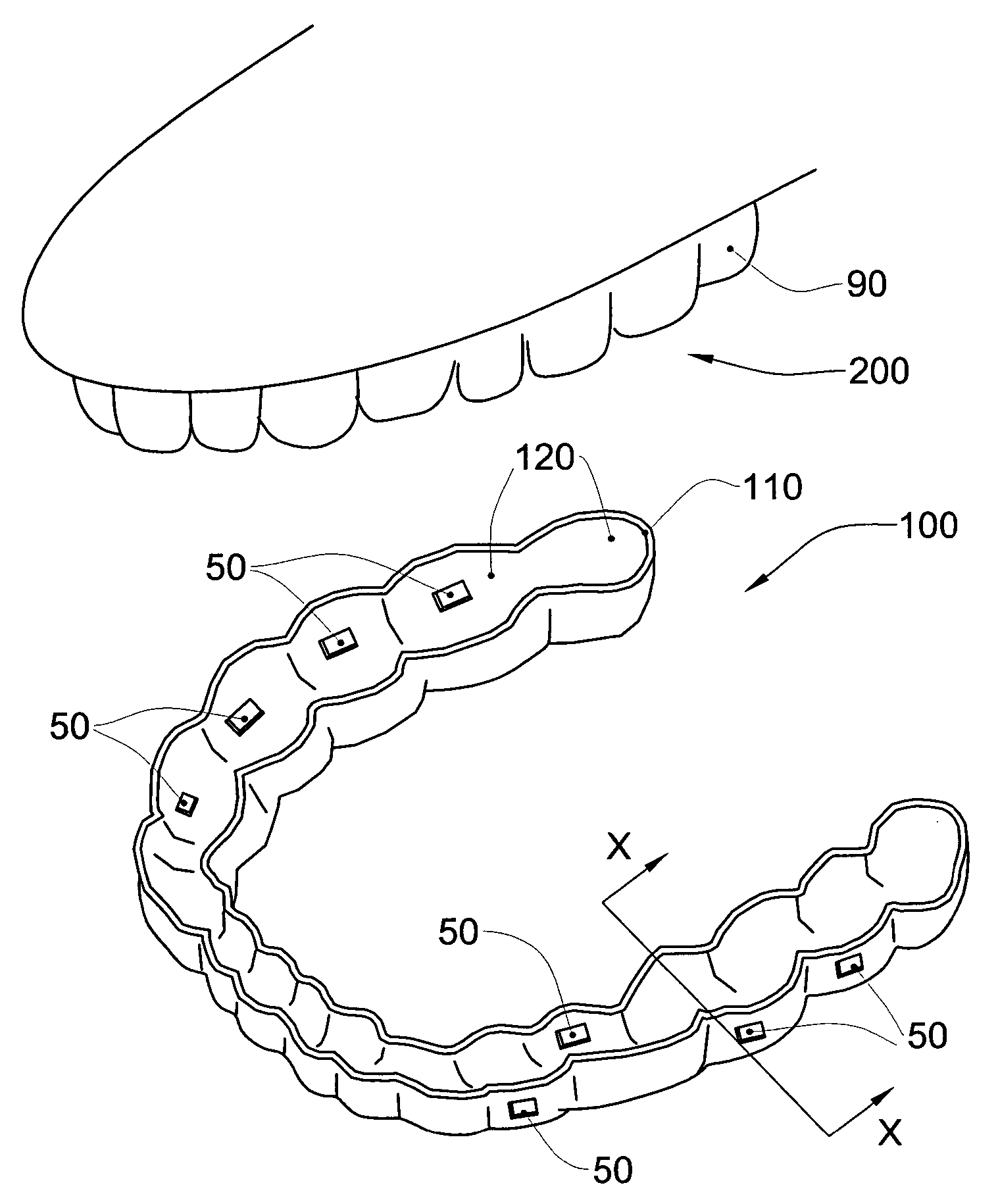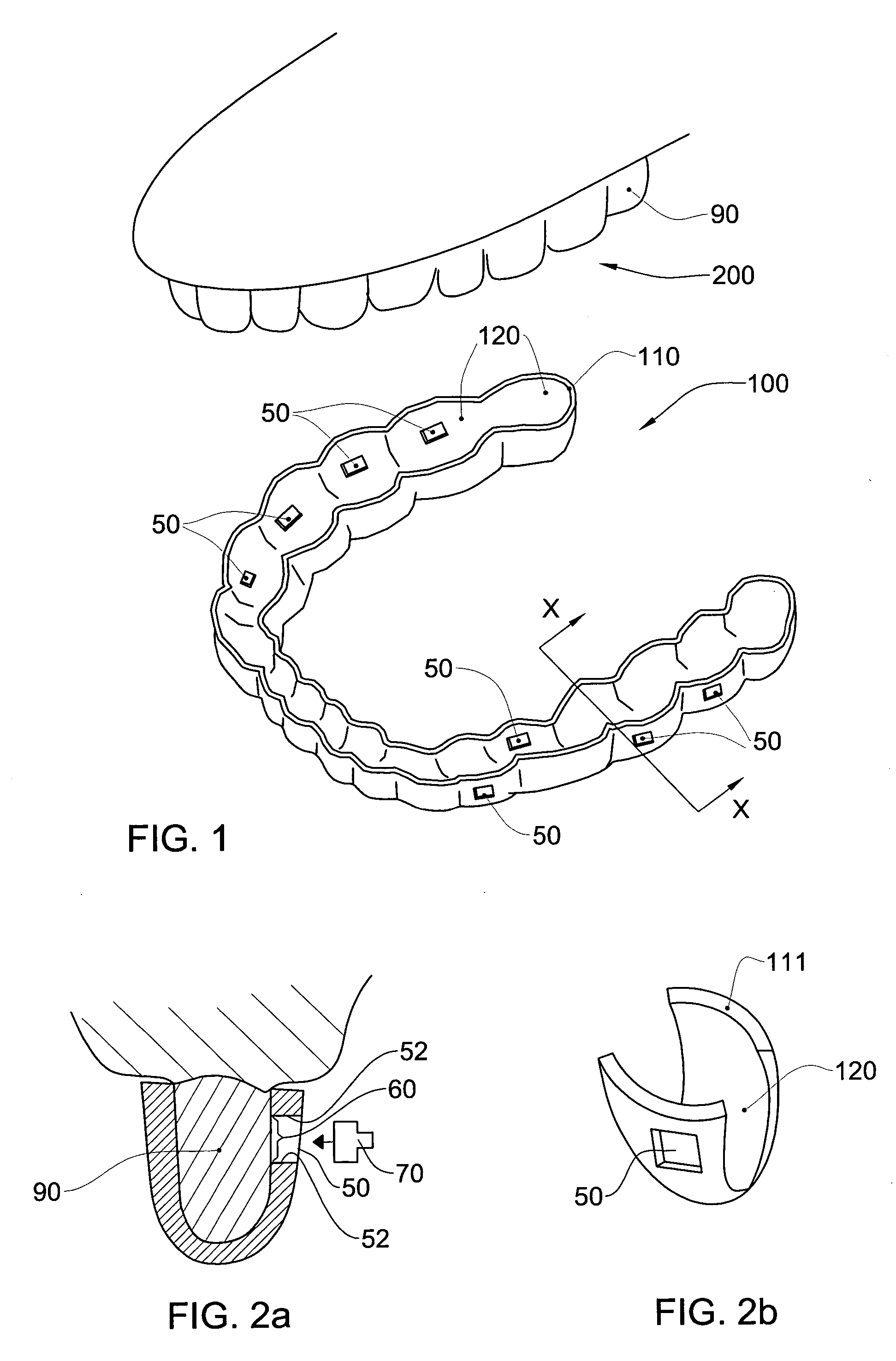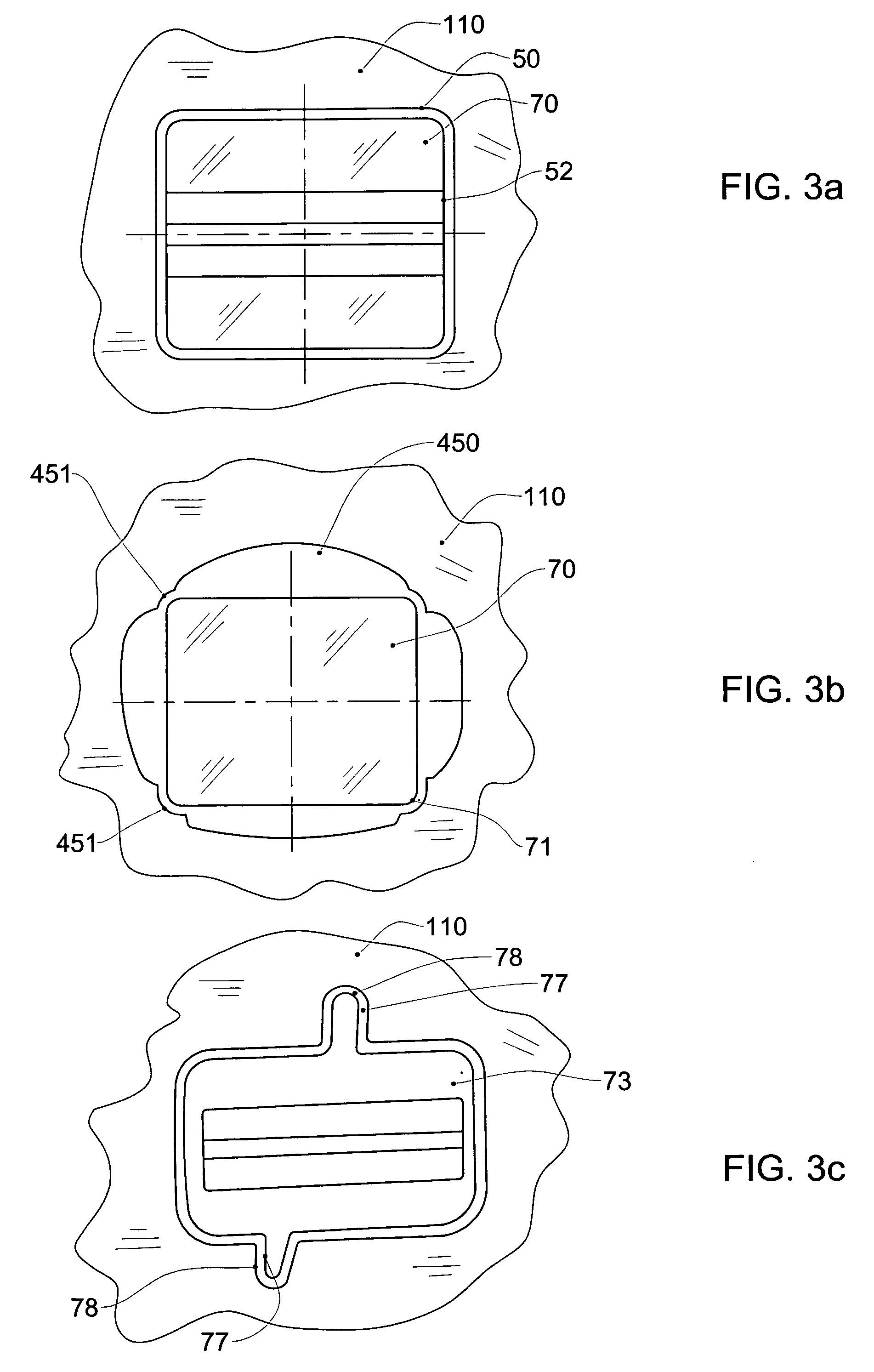Dental targetting device and method
a technology for teeth and target teeth, applied in dental tools, dental surgery, medical science, etc., can solve the problems of difficult to properly position the bracket on the lingual surface, less accurate bracket placement may require repeated treatments, and many efforts to ensur
- Summary
- Abstract
- Description
- Claims
- Application Information
AI Technical Summary
Benefits of technology
Problems solved by technology
Method used
Image
Examples
first embodiment
[0065] Referring to FIG. 1, the present invention comprises a dental targeting device in the form of a tray, generally designated with the numeral 100, having a plurality of windows 50. The tray 100 comprises a U-shaped shell 110 having a plurality of cavities 120 which are shaped to receive teeth. As described in greater detail herein, the tray 100 is designed to fit over an arch 200 regarding which it is desired to provide an orthodontic treatment to at least some of the teeth therein. Thus, the inside shape of each of the cavities 120 is substantially complementary to the external shape of the particular tooth of the arch 200 that is received therein, in particular the lingual and buccal / labial surfaces of the teeth. Accordingly, the tray 100 is designed to fit over the teeth in their current positions, and does not itself require to exert any alignment forces on the teeth, even if manufactured from an elastic material.
[0066] In this embodiment, when the tray 100 is properly seat...
third embodiment
[0103] The tray 100″ is particularly advantageous since it permits the choice of actual bracket to be deferred if necessary, for example due to logistical problems in obtaining specific marks of brackets. Since the positional data required for the bracket is marked using the tray 100″, it is possible to target any bracket to a particular target marked with the tray 100″, so long as the bracket comprises suitable datums compatible with the marking criteria used for the target symbol, for example centerline and slot location datums.
[0104] Referring to FIG. 10, in a fourth embodiment of the invention the tray 600 comprises all the elements and features of the other embodiment, as described herein mutatis mutandis, with the following difference. In the fourth embodiment, the tray 600 comprises a shell 610 similar to shell 110 of the previous embodiments, but does not comprise windows. Rather, transfer means 650 are provided in the inside of the cavities 620 to transfer target informati...
fifth embodiment
[0114] The tray 500 is particularly useful in permitting brackets to be placed in only one or some of the teeth without the necessity of providing a full tray. Such a capability is of particular advantage when it is desired to add or replace a number of brackets to the teeth after the teeth have been moved by some amount.
[0115] When the tray 500 is for a single tooth it may not even be necessary to provide another model of the dentition (physical or virtual). Relative to the tooth, the bracket remains in the same position during the full duration of the treatment. Since the tray 500 comprises a cavity that substantially follows the shape of the tooth it is designed to fit over, the window of the tray will remain in the appropriate place with respect to the tooth when the tray 500 is properly seated onto the appropriate tooth. Thus, the original tooth model may be used to provide the geometrical information required to produce the tray 500.
[0116] In some embodiments it may be desir...
PUM
 Login to View More
Login to View More Abstract
Description
Claims
Application Information
 Login to View More
Login to View More - R&D
- Intellectual Property
- Life Sciences
- Materials
- Tech Scout
- Unparalleled Data Quality
- Higher Quality Content
- 60% Fewer Hallucinations
Browse by: Latest US Patents, China's latest patents, Technical Efficacy Thesaurus, Application Domain, Technology Topic, Popular Technical Reports.
© 2025 PatSnap. All rights reserved.Legal|Privacy policy|Modern Slavery Act Transparency Statement|Sitemap|About US| Contact US: help@patsnap.com



